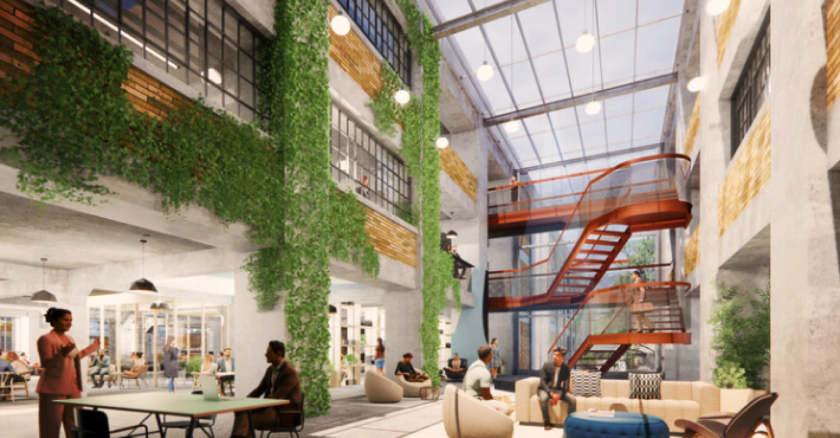With the resurgence of America’s urban centers, the trend throughout the 2010s was away from insulation. People didn’t want to be isolated in a sterile suburban office park. They wanted to be in the heart of the city, able to engage with the urban life around them. A number of companies relocated their headquarters from the suburbs to the city to take advantage of this new demand.
In a post-pandemic world, however, we are starting to see the return of insulation, as companies start choosing locations outside of downtown cores, either in the downtown fringes or actual suburban districts.
Part of this is simply a change in preference. Rather than be in an office tower in a classic financial district, people are turning to office space embedded in mixed-use developments in more lively areas. An example of this is the Bottleworks development in Indianapolis, which converted an old Coca-Cola bottling plant into a mix of offices, residences, a hotel, a food hall, a movie theater and other retail, with copious on-site parking. It’s located not along a skyscraper row but on a thriving neighborhood commercial street in an area with a lot of residents. There’s been so much demand for office space here that the developer is reallocating more of the future phases to offices.
Beyond just changing consumer tastes, however, this also reflects a tacit embrace of insulation. Developments like this are at a geographic remove from the disorder plaguing downtowns, such as large numbers of homeless residents.
As integrated developments, they are also quasi-private. Even if their entrances are on a main city street, their integrated nature facilitates internal circulation. Integrated parking means less need to traverse public areas to get to your car. And where their pathways and streets are actually privately owned, this also allows them to be managed in ways truly public spaces cannot. While different in physical appearance and layout, these developments have something of a parallel to the old atrium-oriented urban renewal developments of the 1970s and '80s, such as the Renaissance Center in Detroit, in that insulation is built into them by design.
The Stutz Building redevelopment, which is also in Indianapolis, fits this model. It’s an old car factory that has been renovated into offices, retail and studio space, with parking across the street. The Stutz, too, is on the fringe of downtown. And its businesses are primarily oriented around outdoor and indoor passageways that are interior to the development — that is, private. Demand has been high, with the Stutz actually attracting office relocations from more conventional suburban areas, despite its high rents.
Louisville is seeing the same trend. Fifth Third Bank recently announced that it was moving its local headquarters from a skyscraper in the core of downtown to NuLu Yard, a new mixed-use development in the city’s hottest neighborhood. The NuLu neighborhood is just east of downtown, separated from it by a very wide freeway overpass. This development will include office space, a hotel, an interior courtyard-focused apartment development, retail and integrated on-site parking. It is both aligned with today’s consumer tastes and designed to provide insulation from downtown disorder.
Bloomberg CityLab recently featured the redevelopment of the old downtown Houston post office into a new mixed-use complex called POST, which contains office space, retail and restaurants and cultural venues. Much of the space is oriented around interior atriums. POST is also on the edge of downtown Houston. It’s bordered on three sides by freeway ramps and a rail line that insulate it, and it's surrounded by parking lots.
Again, these developments are in a sense a throwback to a previous era, echoing elements of atrium developments and malls. As Rebecca Solnit keenly observed about San Francisco in the London Review of Books, “The city remains the densely urban place it always was, but the way people inhabit it is increasingly suburban, looking to avoid strangers and surprises.”
Of course, some of these migrations are to mixed-use districts in actual suburbs as well. The proposed move of the Washington Capitals and Wizards sports teams to a Northern Virginia site is such an example. This is aligned with other trends, with team owners wanting to have large real estate developments around their venues. At the same time, insulation from disorder is also in play. The Washington Post covered one particularly obnoxious street performer outside the current inner-city arena, for example. At a minimum, escaping such annoyances is a bonus of moving to a more insulated location in the suburbs.
Urban advocates have continued to minimize the realities of crime, homelessness and unpleasant public behavior in downtowns. But businesses are getting a different message and are starting to react accordingly. Whatever they might say about it publicly, urbanites and developers are starting to re-embrace a strategy of insulation.












